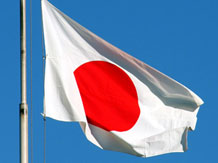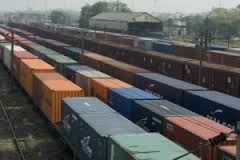FPIs rush into equities, pump in Rs 7,700 crore in August
 Staying with the bullish momentum, foreign investors have deployed over Rs 7,700 crore in the Indian stock market so far this month, driven by global and domestic factors.
Staying with the bullish momentum, foreign investors have deployed over Rs 7,700 crore in the Indian stock market so far this month, driven by global and domestic factors.
It follows a 4-month high inflow of Rs 12,612 crore in the preceding month. That was the highest net inflow since March when FPIs had pumped in Rs 21,143 crore into the stocks.
Indian equities have been witnessing positive inflows from foreign investors since March.
Foreign portfolio investors (FPIs) turned net buyers in March after pulling out a massive Rs 41,661 crore from the market in previous four months (November-February). Brokers said the likely delay in US rate hike is positive for emerging markets, especially India, triggering fresh round of purchases by investors.
Besides, experts attributed the latest inflow to rate cut by Bank of England (BoE) and the passage of long-pending Bill to facilitate the Goods and Services Tax (GST) regime.
Sentiment got a fillip after the long-stalled indirect tax reform GST Constitution Amendment Bill was passed in the Rajya Sabha on August 4 and in the Lok Sabha on August 8.
BoE, earlier this month, had cut its key interest rate by 25 basis points to 0.25 per cent, its first reduction since 2009, and also begun a fresh round of quantitative easing that had been on pause since 2012.
According to depositors’ data, net investment of FPIs stood at Rs 7,723 crore in equities on August 1-19. However, they pulled out Rs 1,699 crore from the debt market, taking the total inflow to Rs 6,023 crore.
On outflow from debt markets, Quantum Mutual Fund Head (fixed income) Murthy Nagarajan said: “Other markets are attractive for FPIs like Indonesia and Brazil as the commodity’s prices have stabilised, which should lead to currencies appreciating in these countries.”
He added: “In the Indian context, there would be USD 26 billion outflow to meet the FCNR(B) redemptions in October and November. This should lead to currency deprecation in India, reducing the total return of FPIs.”
So far this year, FPIs have invested Rs 39,501 crore in equities while withdrawing Rs 6,422 crore from the debt market. This resulted in a net flow of Rs 33,079 crore.
GST Bill passed: India gets tax regime that’s globally competitive, economically gainful
Time was when an importer had to fork out as much as 220% customs duty and individuals were made to pay up to 97% income tax. The Indian tax system has undergone a sea change since then and the passage of the GST Bill by the Rajya Sabha on Wednesday capped the struggle of successive governments for a tax regime that is globally competitive and economically gainful.
From an abysmal level of less than 5% in 1960s, the country’s tax-to-GDP ratio rose to an all-time high of 11.89% in 2007-08 and stood at 10.7% in the last fiscal. While it’s still less than the 18-19% in some developed nations, the proposed GST regime promises to change it for the better. And as India gears up to embrace this regime, a look at the evolution of its tax system over the years suggests there are plenty that can be looked at with optimism.
One of the country’s most important indirect tax reforms started in one of its darkest hours, by one of its most eminent economist-finance ministers. In 1991, when the country was on the cusp of a balance of payment crisis, Manmohan Singh presented his “epochal budget”, drastically cutting the peak customs duty from 220% to 150%. He offered tax concessions for software exports and set up a commission under Raja Chelliah to suggest tax reforms.
He announced: “The time has come to expose Indian industry to competition from abroad… As a first step in this direction, the government has introduced changes in import-export policy, aimed at a reduction of import licensing, vigorous export promotion and optimal import compression.” The country’s peak customs duty now stands at 13.5%; for non-agricultural goods, the peak customs duty is even lower, at 10%.
While the steady reduction in the customs duties since 1991-92 forced the domestic industry to improve their competitiveness, the tax concessions announced by Singh led to the emergence of global IT giants like TCS, Infosys and Wipro. Even Chelliah, who later suggested broadening the tax base and levying lower and less differentiated rates, came to be called by some “the father of India’s tax reforms”.
In 1994, Singh also introduced a service tax (5%) on three services—telephone bills, non-life insurance and tax brokerage—seeking to cash in on the fast-growing services segment, which was making up for some 40% of the country’s economy. The service tax base and rates were steadily raised over the years. It’s no wonder that the service tax collection rose from a paltry R400 crore in 1994-95 to R2,10,000 crore in the last fiscal.
In 2000, the then finance minister Yashwant Sinha effected major rationalisation in the excise duty structure to introduce a single Cenvat rate of 16%. In 2004, with the integration of service tax with the Cenvat chain government sought to reduce the cascading effect of indirect taxes on ultimate consumer of goods and services. In 2005, the value-added tax regime kicked in, as the government decided to rationalise the sales tax system.
India jumps 19 places in World Bank’s logistics performance index
 India’s logistics performance at its key international gateways has improved in the last two years, according to a World Bank report released on Tuesday.
India’s logistics performance at its key international gateways has improved in the last two years, according to a World Bank report released on Tuesday.
In the World Bank’s biennial measure of international supply chain efficiency, called Logistics Performance Index, India’s ranking has jumped from 54 in 2014 to 35 in 2016.
While Germany tops the 2016 rankings, India is ahead of comparatively advanced economies like Portugal and New Zealand. In 2016, India’s international supply chain efficiency was at 75% of top-ranked Germany, said the report titled Connecting to Compete: 2016 Trade Logistics in the Global Economy. This is an improvement over the 66% efficiency when compared to the leader (again Germany) in 2014.
Better performance in logistics will not only boost programmes, such as Make in India, by enabling India to become part of the global supply chain, it can also help increase trade. In 2015-16, India’s foreign trade shrank by around 15%.
The Logistics Performance Index analyses countries across six components: efficiency of customs and border management clearance, quality of trade and transport infrastructure, ease of arranging competitively priced shipments, competence and quality of logistics services, ability to track and trace consignments, and the frequency with which shipments reach consignees within scheduled or expected delivery times.
It is computed from the survey responses of about 1,051 logistics industry professionals.
Programmes, such as Make in India, and improvements in infrastructure have helped India improve its logistical performance, said Arvind Mahajan, partner and national head (energy, infrastructure and government) at KPMG India, a consultancy. He also said that the emergence of skilled professionals and technological improvements that have enabled services such as track-and-tracing have helped India close the gap with leaders.
That said, Logistics Performance Index does not address how easy or difficult it is to move goods to the hinterland. For that, World Bank has another measure—a domestic LPI which analyzes a country’s performance over four factors: infrastructure, services, border procedures and supply chain reliability.
While not all yardsticks are comparable across countries, there are some which show that India still has some way to go.
For instance, only 69% of shipments from India meet the quality criteria, compared to 72% for China and 77% for Kenya. On the other hand, it takes two and three days to clear shipments, without and with inspection, respectively—numbers comparable to China but longer than what it takes in top-ranked Germany.
Similarly, India has an average of 5 forms required for import or export, compared to 4.5 for China and 2 for Germany.
In this regard, the Goods and Services Tax (GST) has the potential to revolutionize the transport industry in India, said Capt. Uday Palsule, former managing director of Spear Logistics Pvt. Ltd. “Inter-state travel time will be drastically reduced if the hurdle of checking documents at every state border is done away with,” he said. It will also help boost the returns of the trucking industry and feed into better performance of the logistics sector, added Palsule.
India must activate ‘stalled engines’ to sustain 7.6% growth: World Bank
 India will maintain its growth rate of 7.6 per cent GDP growth in 2016-17, which would accelerate to 7.7 per cent in 2017-18 and 7.8 per cent in 2018-19, the World Bank said on Monday.
India will maintain its growth rate of 7.6 per cent GDP growth in 2016-17, which would accelerate to 7.7 per cent in 2017-18 and 7.8 per cent in 2018-19, the World Bank said on Monday.
But for this, India will need to “activate the stalled engines”, including agricultural growth and rural demand, trade and private investment, while ensuring demand from urban households and public investments.
In its report ‘India Development Update- Financing Double Digit Growth’, the World Bank said the economy’s potential growth rate is about 7.4 per cent to 7.5 per cent.
“The outlook for the coming year is favourable and robust,” said Frederico Gil Sander, Senior Country Economist, World Bank, and main author of the report.
The report, also prescribed means for India to attain the elusive double-digit growth. This would depend on various factors, including higher participation of women in the labour force, productivity growth such as business environment reform agenda and GST as well as a pick-up in private investment.
The World Bank’s forecast is however, not as optimistic as the Finance Ministry that is eyeing 8 per cent growth this fiscal after 7.6 per cent growth last fiscal.
However, Onno Ruhl, Country Director, World Bank (India), said improved global prospects would also be necessary for double-digit growth in the domestic economy.
The report also warned that near-and medium-term risks stem from the banking sector and “its ability to finance private investment which continues to face several impediments in the form of excess global capacity, regulatory and policy challenges, in addition to corporate debt overhang”.
It has also suggested two key reforms in the financial sector — accelerating the ongoing transformation of banks to become more market oriented and competitive; and also to address the problem of non-performing assets (NPAs).
“India’s financial sector has performed well on many dimensions and can be a reliable pillar of future economic growth,” said Sander.
RBI top-level changes
While urging for more reforms in the banking sector such as giving fresh capital to banks for governance reforms or giving them tools to manage stress in their balance sheets, the World Bank declined to comment on the impact the top-level change at the Reserve Bank of India (RBI) will have on these measures.
“We respect the RBI Governor’s decision to return to academia. India has a long history of sound macro-economic policy making and effective and conservative supervisor. There is no reason to expect that it will change,” said Ruhl when asked whether the decision by RBI Governor Raghuram Rajan to not seek a second term would impact banking reforms.
Investor sentiment improving, catalysts needed for fresh flows

Investor sentiment towards the Indian economy is improving but markets are now looking at the passage of key reform bills like the Goods and Services Tax ( GST ) to act as “new catalysts”, says a Citigroup report.
Expectations on structural reforms however remain low and “could be a positive catalyst if GST gets passed”, it said.
According to the global financial services major, both equity and fixed income (FI) investors are portraying a constructive outlook for India, but are waiting for the next ‘catalyst’ for fresh inflows.
“Positioning on India still remains heavy and relative valuations do not appear to be cheap. This is possibly leading to a lack of substantial fresh inflows as the markets await new catalysts,” Citigroup said in a research note.
The BJP-led NDA government assumed office on May 26, 2014 with a thumping majority in Lok Sabha , but some key bills, including the one on GST, have been stuck in Rajya Sabha due to opposition from some other parties, mainly Congress.
As per the report, foreign equity as well as fixed income investors believe that the Indian economy is relatively attractive than other emerging market economies as it provides better macro stability. Some investors were also enthusiastic about the prospects of a cyclical recovery.
Though investors are on a cautious mode but with better monsoon forecasts, rural consumption is likely to revive. Moreover, urban consumption is expected to get a boost post the 7th Pay Commission implementation.
Source: http://economictimes.indiatimes.com/articleshow/52398282.cms
Failure to implement reforms may hamper India investment: Moody’s
 A failure to implement reforms in India could hamper investment amid weak global growth, global ratings agency Moody’s Investors Services cautioned on Wednesday.
A failure to implement reforms in India could hamper investment amid weak global growth, global ratings agency Moody’s Investors Services cautioned on Wednesday.
It said it was highly unlikely that major reforms would be enacted in the upper house of parliament where the ruling coalition is in a minority. The agency said despite overall supportive domestic conditions for the country’s companies, potential headwinds loom from a loss of reform momentum.
The Modi administration so far this year has been unable to enact legislation on key reforms, including a unified goods and services tax and the Land Acquisition Bill, it said.
The government hopes to get the GST Constitution Amendment bill approved in parliament and is keen to push the legislative business. It has reached out to the opposition parties to forge a consensus and ensure the passage of the crucial GST bill. The Narendra Modi government has identified implementation of GST as a key reform initiative. The government has unveiled a flurry of reforms after the rout in Bihar assembly elections and Modi has promised to accelerate the reforms drive.
Moody’s Investors Service says that most non-financial corporates it rates in India (Baa3 positive) will benefit from strong domestic growth and accommodative monetary policy, although weak global growth and a potential US rate hike will weigh on businesses.
“Healthy 7.5% GDP growth for India for the fiscal year ending March 2017 (FY2017) and a pick-up in manufacturing activity will be broadly supportive of business growth,” says Vikas Halan, a Moody’s Vice President and Senior Credit Officer.
“However, the corporates remain vulnerable to the volatile Indian rupee as against the US dollar and to low commodity prices, which has in turn led to a sharp decline in external trade,” said Halan while releasing the agency’s 2016 outlook presentation for Indian non-financial corporates.
The fall in commodity prices has benefited many Indian corporates given the country’s status as a net important of raw materials and its recent history of high inflation.
The resultant moderating inflation should result in lower borrowing costs for corporates and yields on corporate bonds, said Moody’s.
The ratings agency expects upstream oil and gas companies to benefit from lower fuel subsidy burdens, although low crude and domestic natural gas prices will continue to hurt profitability.
Refining and marketing companies meanwhile should benefit from healthy margins as demand growth outpaces expected capacity additions.
The agency’s negative outlook for the steel industry reflects elevated leverage and an extended period of low prices due to continuing steel imports, while the negative outlook for metals and mining companies reflects bleak global commodity prices.
In the real estate sector the agency expects demand to improve in 2016 on the back of lower interests rates, although approval delays could push back project launches for property developers.
It expects retail auto sales volumes to grow 6% in 2016 on the back of sustained growth in passenger vehicles sales and a recovery in commercial vehicle sales.
The telecom companies that the agency rates in India have reported improving revenue per user (ARPU) and EBITDA margins, however competition remains intense and the regulatory framework continues to evolve.
